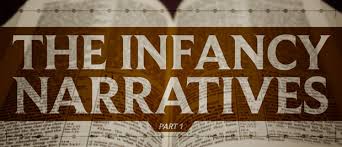
from Google Images
One of the problems we are faced with, if we insist Luke’s mention of Theophilus in Luke 1:3 refers to a new gentile believer whose faith needs to be strengthened (Luke 1:4), is that he is very vague about the content of his infancy narratives. For example, Luke mentions the priestly course of Abajah—what does that mean to a gentile. He also mentions offering incense, which to the Jews concerned prayer but not necessarily so for the gentile. Why does Luke do this? However, if we believe Theophilus (Luke 1:3) is an unbelieving Jew who needs proof of that which he has been informed (Luke 1:4), the whole matter needs no further explanation!
Theophilus, the Most Excellent Jew, could be none other than Theophilus, the high priest, who held that high office from about 36 AD (autumn) to 41 AD (spring). Obviously, he would not need any instruction about the priesthood. In fact, although his understanding about Luke’s statements might be challenged, he would not need a detailed explanation of what Luke was trying to say. For example, a gentile believer fresh out of paganism might have a problem with Luke’s mention of angels in his narrative. This would be because pagans often understood angels and demons to be lesser gods. Luke doesn’t tell his reader what angels are, but Theophilus, the high priest, would have no problem understanding the context of Luke’s remarks, despite his disbelief in angels (cf. Acts 23:8)
The most troublesome points in Luke’s infancy narratives, as it pertains to Theophilus as a new gentile believer, are the meaning of the birth of John and the pregnancy of Mary. A new believer who came out of the pagan religion might interpret Luke’s lack of detail concerning John and references to Elijah in the Old Testament to indicate something like Mercury going before Zeus to tell others about him (cf. Acts 14:11-13). However, Theophilus, the high priest, would have no problem whatsoever understanding Luke’s reference to John as the coming Elijah who would go before the Messiah. There were many Jews in the first century AD who looked for the coming of the Messiah, and the coming of Elijah who was to prepare his way. The coming of Elijah was the last prophecy of the Old Testament. This final prophecy was meant to hold the attention of God’s people, causing them to wait expectantly for the coming of their Lord whom his messenger was predicted to announce. Faithful Jews at this time in the first century AD naturally waited expectantly for the coming of their Lord and his messenger.
Mary’s conception (Luke 1:34-35) would be even more troublesome for a new gentile believer. Coming from a Greek cultural background, how could he not compare Mary’s pregnancy with that of one of the pagan myths,[1] where a god lusted after and raped a young maiden? While this is a disgusting thought to think about our God, a new believer, in the context of the Greek culture of the first century AD, would have no choice with Luke’s lack of descriptive detail but to equate the birth of Jesus with some pagan myth. On the other hand, if Theophilus was the high priest mentioned above, we could expect that he would understand Luke’s point perfectly well without thinking of Greek mythology. We could expect him to immediately understand the overshadowing of the Most High for Mary to be an allusion to the cloud that overshadowed and covered the Tabernacle in the wilderness. While we wouldn’t expect this Theophilus to believe Luke, he wouldn’t have a problem with Luke’s premise that Almighty God could do such a thing.
Finally, it is assumed by all in first century culture that respectable women never traveled alone. If Theophilus was a gentile who needed more details about his new faith (Luke 1:4), he would not understand Luke’s lack of detail at this point, and would have unanswered questions about Mary’s safe journey. Luke presents Mary’s safe visit to Elizabeth and her safe return home by inferring the use of the Jewish annual festivals and of Mary’s using pilgrimages with friends and relatives to journey to and from Judea. It is easier to believe Theophilus, the Jewish high priest, would understand Luke’s lack of detail in his narrative at this point.
_____________________________
[1] See especially The ‘Virgin Births’ of Other Faiths and Jesus and Dionysus.
librarygeek
April 8, 2016 at 23:28
I found this point very interesting:
“Luke presents Mary’s safe visit to Elizabeth and her safe return home by inferring the use of the Jewish annual festivals and of Mary’s using pilgrimages with friends and relatives to journey to and from Judea.”
I don’t remember hearing anyone else suggest that very plausible theory. What festival do you think she travelled to see Elizabeth, and I assume there was another festival 3 months later when she returned?
Eddie
April 9, 2016 at 08:28
Yes, there are two possibilities for a trip to Elizabeth, but only one possibility for Mary’s return to Galilee, three months later. I’ll speak about this in an upcoming blogpost. The festival that Luke uses to get Mary to Elizabeth is Chanukah, and three months later would be Purim, two minor festivals, but Jews in Galilee kept both feasts. Pilgrims of the Diaspora did not keep them, at least not to go to Jerusalem. Keep following my studies on Luke, and you’ll see my reasoning, and if you want, we can discuss the details then.